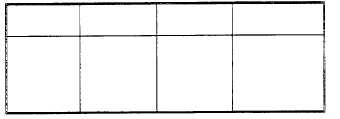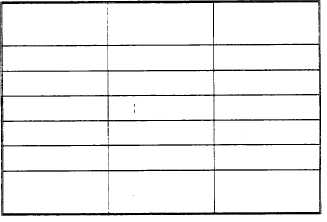stations are limited to three reportable layers unless CB
or TCU are present; in which case, a fourth layer may be
reported.
Total Sky Coverage
To determine total sky coverage, simply add
together the amount of clouds and/or obscurations in
each layer. Total sky cover cannot exceed 8/8.
Summation Sky Coverage
Summation sky coverage is a concept used to
determine cloud ceiling. Summation sky cover is
determined for each layer of clouds by adding the
coverage in the cloud layer to the coverage of all layers
below it. In the example that follows, this has been
done.
LAYER
LAYER
SUM OF SKY
SUMMATION
NUMBER
AMOUNT
COVER
LAYER COVER
1
1/8
1/8
FEW
2
3/8
4/8
SCATTERED
3
3/8
7/8
BROKEN
4
1/8
8/8
OVERCAST
Summation coverage for each layer is converted
into plain language terms. They are clear, for no clouds
present; few, for greater than 1/8 to 2/8; scattered, for
3/8 to 4/8 clouds; broken, for 5/8 to 7/8 clouds; and
overcast, for 8/8 clouds, as shown in table 1-2. The term
thin is not used in METAR/SPECI observations.
Table 1-2.—Cloud Ceiling Summation Coverage and Terms
Contraction
Meaning
T e x t
T e x t
SKC
Sky clear
0/8
FEW
trace
>0/8-2/8
SCT
Scattered
3/8-4/8
BKN
Broken
5/8-7/8
OVC
Overcast
8/8
VV
Vertical
8/8
Visibility
CEILING DETERMINATION
The terms ceiling and cloud ceiling are defined as
the height-above-ground level of the lowest broken or
overcast layer. If the sky is totally obscured, the height
of the vertical visibility (VV) is used as the ceiling
height. Table 1-2 relates the measurement of sky cover
as observed in eighths, to the terms used to discuss sky
cover and ceilings. In the example we just covered, the
ceiling would be at layer No. 3, the broken layer.
In addition to determining layer amounts, total sky
coverage, summation coverage, and the ceiling based
on the summation coverage, you must also identify
cloud layer heights and ceiling height.
CLOUD LAYER HEIGHTS/CEILING
HEIGHT
The height must be determined for the base of all
layers of clouds. The height for the lowest broken or
overcast layer is used as the ceiling height. A surface-
based obscuration also constitutes a ceiling; vertical
visibility into the obscuration is used as ceiling height.
Cloud layer height and ceiling height may be
determined by several methods. Estimation is the most
frequently used method for cloud layer height. It is
acceptable for determining heights of low scattered
cloud layers or higher cloud layers. When the cloud
layer forms a ceiling, especially if the layer height is
below 3,000 feet, one or more of the more accurate
methods should be used. The following list of cloud
layer height determination methods is generally ordered
from the most accurate to the least accurate:
Measurement by comparison to known heights
of structures or landmarks within 1 1/2 miles of
the runway
Measurement by ASOS or SMOOS cloud-
height sensor
Measurement by rotating beam ceilometer for
heights less than 10 times the baseline
Measurement by ceiling light and clinometer
Estimation by rotating beam ceilometer for
heights more than 10 times the baseline
Estimation by pilot during ascent or descent
Estimation by ceiling balloon
Estimation by comparison to terrain or structures
more than 1 1/2 miles from the runway
Estimation by convective-cloud-height diagram
Estimation using the Skew-T, Log P diagram
Estimations from conventional weather/Doppler
radar
Estimation using other station reports in the
vicinity
Estimation by observational experience
1-27





